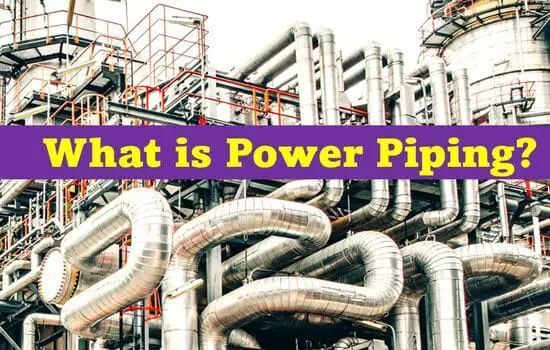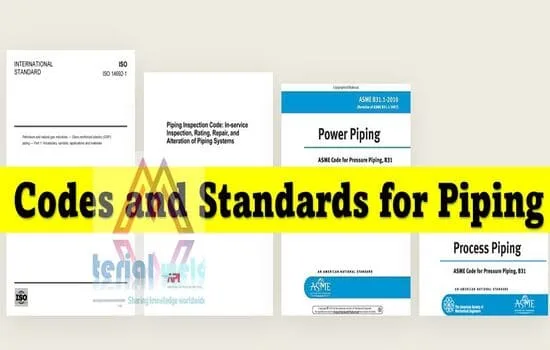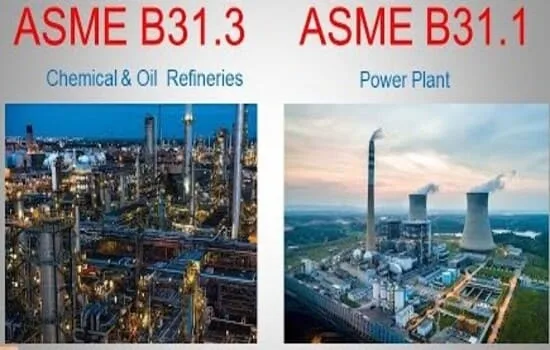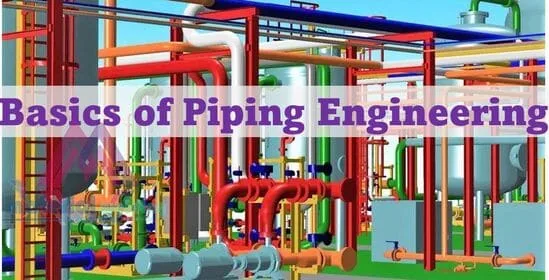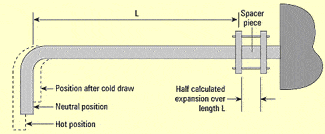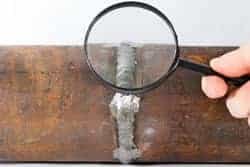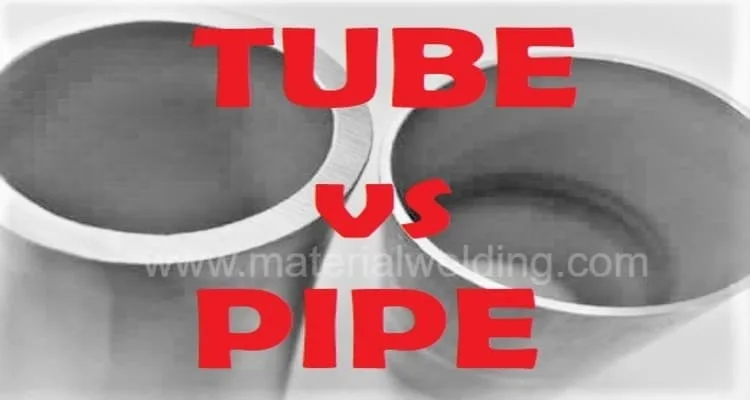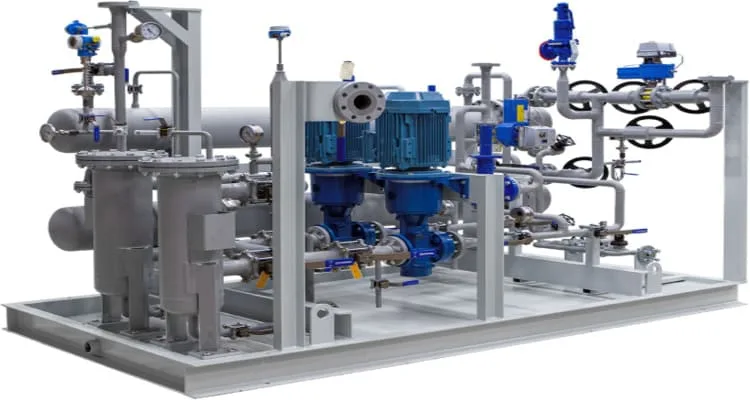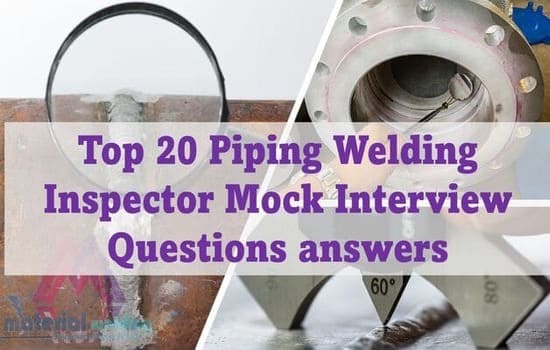What is Process Piping mean?
Process piping is a crucial element in many industries, including oil and gas, chemical, pharmaceutical, and food processing. This blog post aims to provide a comprehensive understanding of process piping, including its meaning, types, standards, and the difference between process piping and power piping.
What is Process Piping?
Process piping refers to a system of pipes, tubes, and fittings (valves, instruments, piping fittings) used to transport fluids (liquids and gases) or semi-fluid materials (slurries) in industrial processes. These systems are specifically designed and engineered to transport substances under various conditions, such as high pressures, high-temperatures, and corrosive environments.
Some common fluids transported through process piping include water, oil, gases (such as methane, propane, and nitrogen), chemicals (such as acids, bases, solvents, and catalysts), steam, air, and refrigerants.
Process piping may include a variety of components, such as valves, pumps, fittings, and instrumentation, and is often subject to strict regulatory and safety requirements.
Types of Process Piping
There are several different types of process piping materials, categorized based on the materials they are made from and the applications they serve. Some common types include:
- Carbon Steel: Carbon steel pipes are widely used in various industries due to their high strength, durability, and relatively low cost. They are suitable for applications involving high pressures, temperatures, and vibration.
- Stainless Steel: Stainless steel pipes are highly resistant to corrosion and oxidation, making them ideal for applications involving corrosive substances, high temperatures, and sanitary conditions, such as in the food and beverage industry.
- Alloy Steel: Alloy steel pipes are made by combining carbon steel with other elements, such as chromium, molybdenum, and nickel, to enhance their mechanical properties and corrosion resistance. These pipes are used in applications involving high pressures and temperatures, such as in the power generation and petrochemical industries.
- Non-Metallic: Non-metallic pipes, such as those made from plastic, glass, or ceramic materials, are used in applications that require corrosion resistance and low weight. They are commonly used in the chemical and pharmaceutical industries.
Materials for Process Piping
The common materials used for process piping include:
- Carbon Steel – Carbon steel is the most common material used for process piping. It is inexpensive, has good strength, and is resistant to a wide range of temperatures and pressures. The most commonly used carbon steels are ASTM A106, A53, and API 5L.
- Stainless Steel – Stainless steels are used when corrosion resistance is important. Common stainless steel grades for piping include 304, 316, and duplex stainless steels. Stainless steels can withstand a wide range of temperatures and many chemicals. However, they are more expensive than carbon steel.
- Nickel Alloys – Nickel alloys like Inconel and Monel are used for high-temperature applications or in severely corrosive environments. They can withstand very high temperatures and are highly corrosion resistant. However, nickel alloys are significantly more expensive than carbon steel or stainless steel.
- Aluminum – Aluminum alloys are used for piping in applications where weight is a concern. Aluminum is lightweight, corrosion resistant, and low cost. However, aluminum has lower strength than steel and cannot withstand as high temperatures. Aluminum piping is often used for water distribution systems.
- Plastics – Plastic piping such as PVC, CPVC, PP, PVDF, and PTFE is commonly used for corrosive fluid transfer or water distribution systems. Plastics are highly chemical and corrosion resistant but have lower strength and temperature capabilities than metals.
- Non-metallic – Other non-metallic piping options include fiberglass reinforced plastic (FRP), rubber lined steel or concrete. These are often used for severely corrosive applications.
Components of Process Piping
The components of process piping can vary depending on the specific application, but some common components include:
- Pipes: These are the main component of process piping and are typically made of materials such as steel, copper, or plastic. Pipes come in various sizes (Schedule/ DN) and shapes depending on the application and the volume of fluid or gas being transported.
- Valves: Valves are used to control the flow of fluids or gases through the piping system. They can be categorized into several types such as ball valves, gate valves, globe valves, and butterfly valves.
- Fittings: Fittings are used to connect pipes together and to other equipment such as pumps, valves, and tanks. Examples of fittings include couplings, elbows, tees, and reducers.
- Flanges: Flanges are used to connect pipes together and to valves and other equipment. They are typically made of steel and come in various sizes and pressure ratings.
- Gaskets: Gaskets are used to create a seal between flanges and other connections in the piping system. They are typically made of rubber or other materials that can withstand high temperatures and pressures.
- Supports: Supports are used to hold up the pipes and prevent them from sagging or bending. They can be made of steel, concrete, or other materials.
- Instrumentation: Instrumentation includes devices such as pressure gauges, flow meters, and temperature sensors that are used to monitor and control the flow of fluids or gases through the piping system.
- Expansion joints: Expansion joints are used to compensate for thermal expansion and contraction of the piping system. They are typically made of materials such as rubber or metal and allow the piping system to expand and contract without causing damage.
Process Piping Codes & Standards
Several international and regional organizations have developed codes and standards to ensure the safe and efficient design, fabrication, installation, and maintenance of process piping systems.
The main code for Process Piping is ASME B31.1. In ASME B31.1, Table 326.1 covers related codes & standards for Process Piping materials and components. A summary of these codes & standards are:
Nonmetallic Fittings, Valves, and Flanges
- Process Glass Pipe and Fittings: ASTM C599
- Threaded PVC Plastic Pipe Fittings, Sch 80: ASTM D2464
- PVC Plastic Pipe Fittings, Sch 40: ASTM D2466
- PVC Plastic Pipe Fittings, Sch 80: ASTM D2467
- Socket-Type ABS Plastic Pipe Fittings, Sch 40: ASTM D2468
- Thermoplastic Gas Pressure Pipe, Tubing, and Fittings : ASTM D2513
- Reinforced Epoxy Resin Gas Pressure Pipe and Fittings : ASTM D2517
- Plastic Insert Fittings for PE Plastic Pipe : ASTM D2609
- Socket-Type PE Fittings for Outside Diameter-Controlled PE Pipe and Tubing: ASTM D2683
- CPVC Plastic Hot- and Cold-Water Distribution Systems : ASTM D2846/D2846M
- Butt Heat Fusion PE Plastic Fittings for PE Plastic Pipe and Tubing : ASTM D3261
- PB Plastic Hot- and Cold-Water Distribution Systems: ASTM D3309
- Fiberglass RTR Pipe Fittings for Nonpressure Applications: ASTM D3840
- Machine Made “Fiberglass” (Glass-Fiber-Reinforced Thermosetting Resin) Flanges: ASTM D4024
- Contact Molded Fiberglass RTR Flanges: ASTM D5421
- Fiberglass Pressure Pipe Fittings: ASTM D5685
- Threaded CPVC Plastic Pipe Fittings, Sch 80: ASTM F437
- Socket-Type CPVC Plastic Pipe Fittings, Sch 40: ASTM F438
- CPVC Plastic Pipe Fittings, Schedule 80: ASTM F439
- Electrofusion Type PE Fittings for Outside Diameter Controlled PE Pipe and Tubing: ASTM F1055
- Plastic-Lined Ferrous Metal Pipe, Fittings, and Flanges: ASTM F1545
- Pressure-Rated Polypropylene (PP) Piping Systems: ASTM F2389
- Plastic Industrial Ball Valves: MSS SP-122
Nonmetallic Pipes and Tubes PE Line Pipe
- PE Line Pipe: API 15LE
- Low Pressure Fiberglass Line Pipe: API 15LR
- Reinforced Concrete Low-Head Pressure Pipe: ASTM C361
- Process Glass Pipe and Fittings: ASTM C599
- ABS Plastic Pipe, Sch 40 and 80: ASTM D1527
- PVC Plastic Pipe, Sch 40, 80 and 120: ASTM D1785
- PE Plastic Pipe (SIDR-PR) Based on Controlled Inside Diameter: ASTM D2239
- PVC Plastic Pressure-Rated Pipe (SDR Series): ASTM D2241
- ABS Plastic Pipe (SDR-PR): ASTM D2282
- Classification for Machine-Made RTR Pipe: ASTM D2310
- PE Plastic Pipe, Sch 40 & 80, Based on Outside Diameter: ASTM D2447
- Thermoplastic Gas Pressure Pipe, Tubing, and Fittings: ASTM D2513
- Reinforced Epoxy Resin Gas Pressure Pipe and Fittings: ASTM D2517
- PB Plastic Pipe (SDR-PR): ASTM D2662
- PB Plastic Tubing: ASTM D2666
- Joints for IPS PVC Pipe Using Solvent Cement: ASTM D2672
- PE Plastic Tubing: ASTM D2737
- CPVC Plastic Hot- and Cold-Water Distribution System: ASTM D2846/D2846M
- Filament-Wound Fiberglass RTR Pipe: ASTM D2996
- Centrifugally Cast Fiberglass RTR Pipe: ASTM D2997
- PB Plastic Pipe (SDR-PR) Based on Outside Diameter: ASTM D3000
- PE Plastic Pipe (DR-PR) Based on Controlled Outside Diameter : ASTM D3035
- PB Plastic Hot- and Cold-Water Distribution Systems :ASTM D3309
- Fiberglass RTR Pressure Pipe : ASTM D3517
- Fiberglass RTR Sewer and Industrial Pressure Pipe: ASTM D3754
- CPVC Plastic Pipe, Sch 40 and 80: ASTM F441/F441M
- CPVC Plastic Pipe (SDR-PR): ASTM F442/F442M
Miscellaneous
- Contact-Molded RTP Laminates for Corrosion Resistant Equipment :ASTM C582
- Threads for Fiberglass RTR Pipe (60 deg stub) : ASTM D1694
- Solvent Cements for ABS Plastic Pipe and Fittings: ASTM D2235
- Solvent Cements for PVC Plastic Piping Systems: ASTM D2564
- Joints for Plastic Pressure Pipes Using Flexible Elastomeric Seals: ASTM D3139
- Fiberglass RTR Pipe Joints Using Flexible Elastomeric Seals: ASTM D4161
- Solvent Cements for CPVC Plastic Pipe and Fittings: ASTM F493
- Taper Pipe Threads 60° for Thermoplastic Pipe and Fittings: ASTM F1498
- Metal Insert Fittings for Polyethylene/Aluminum/Polyethylene and Crosslinked Polyethylene/Aluminum/ Crosslinked Polyethylene Composite Pressure Pipe: ASTM F1974
Some of the most widely recognized codes and standards include:
- ASME B31.3 – Process Piping: Developed by the American Society of Mechanical Engineers (ASME), this code provides guidelines for the design, fabrication, inspection, testing, and maintenance of process piping systems.
- API Standards: The American Petroleum Institute (API) has developed numerous standards related to process piping in the oil and gas industry, including API 5L (Line Pipe), API 605 (Large Diameter Carbon Steel Flanges), and API 6D (Pipeline Valves).
- EN Standards: European Standards (EN) related to process piping include EN 10216 (Seamless steel tubes for pressure purposes) and EN 13480 (Metallic industrial piping).
- ISO Standards: The International Organization for Standardization (ISO) has developed several standards related to process piping, including ISO 4200 (Plain-end steel tubes) and ISO 15590 (Induction bends and fittings).
What is a Process Piping System?
A process piping system is a network of interconnected pipes, valves, fittings, control instruments and other components designed to transport fluids between various processing units within an industrial facility. Piping system mix, separate, pressurize, control, regulate and transport the fluids from one location to other. These systems are specifically engineered based on the requirements of the process, the properties of the transported substances, and the operating conditions.
Difference Between Process Piping and Power Piping
While both process piping and power piping involve the transport of fluids, they serve different purposes and have distinct characteristics:
- Purpose: Process piping is used in industrial facilities to transport fluids between different processing units, while power piping is used in power generation plants to transport steam, water, and other fluids related to the generation and transfer of energy.
- Codes & Standards: Process piping systems are governed by ASME B31.3 and other related standards, while power piping systems are governed by ASME B31.1 (Power Piping).
- Operating Conditions: Process piping systems typically deal with a wider range of fluids, pressures, and temperatures compared to power piping systems, which primarily handle steam and water at high temperatures and pressures.
- Materials & Design: Due to the differences in operating conditions and transported substances, process piping systems often require specialized materials and design considerations, such as corrosion-resistant alloys, lined pipes, and expansion joints.
Difference Between Process Piping and Plumbing Piping
The main differences between process piping and plumbing piping are:
- Fluids Handled – Process piping handles raw materials, intermediate and final products in industrial processes. Plumbing piping handles potable water, sewage, venting and drainage in building systems. The fluids in process piping are often hazardous chemicals at extreme temperatures and pressures. Plumbing piping deals with more benign fluids at ambient conditions.
- Codes and Standards – Process piping follows industrial codes like ASME B31.1, API5L, and PS 15. Plumbing piping follows plumbing codes like Uniform Plumbing Code (UPC) and International Plumbing Code (IPC). Process piping standards focus on safety, reliability and integrity. Plumbing standards focus more on public health and convenience.
- Pipe Sizing – Process piping uses larger diameter pipes to handle large flow rates. Plumbing piping typically uses smaller diameter pipes for a building’s needs. Process piping also requires precise sizing for efficiency. Plumbing sizing is more rule of thumb.
- Materials – Process piping uses high grade alloys to withstand harsh conditions. Plumbing piping uses lower grade, more cost-effective materials that suit ambient and domestic temperature/pressure conditions. Process piping commonly uses carbon steel, stainless steel, and exotic alloys. Plumbing piping primarily uses copper, PVC, ABS and copper alloys.
- Joints and Connections – Process piping uses welded or flanged joints to create strong, leak-tight seals. Plumbing piping uses easier to install and more economical joints like soldered, threaded, and solvent welded joints. Process piping requires precise joining methods for safety. Plumbing joint integrity is less critical.
- Equipment – Process piping connects major equipment like reactors, tanks, heat exchangers, valves, and instrumentation. Plumbing piping connects fixtures like sinks, toilets, bathtubs, and appliances within a building. Process piping equipment handles fluids and gases on an industrial scale. Plumbing equipment serves end users.
